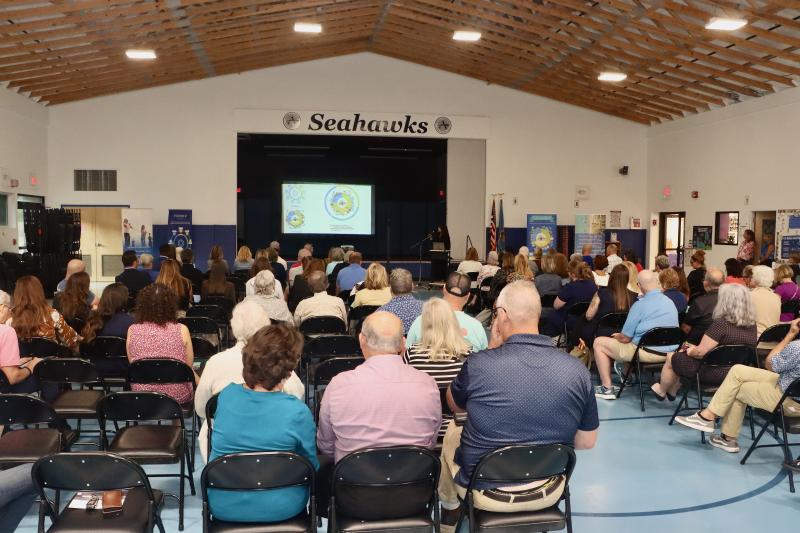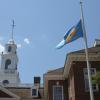Blue Zone reports findings from Sussex County visit

The organizers of Blue Zone, a proposed community-led initiative aimed at getting people to live healthier lifestyles, have released a report on how the project could launch in Sussex County.
They discussed their findings during a gathering at Delaware Technical Community College Feb. 3.
The report is based on the results of windshield tours the organizers took in five towns – Lewes, Milford, Seaford, Millsboro and Georgetown. Those five municipalities have expressed interest in possibly becoming Blue Zone communities.
Partners For Wellbeing, who launched Blue Zone here in 2024, are gauging how much support there is before officially launching the initiative in those communities or even county-wide.
There has been no determination how Blue Zone would be funded in Delaware.
But, Partners For Wellbeing said their goal is that municipalities would not have to fund their participation. They said money could come from the state down the road, but Blue Zone would likely be funded through partnerships with healthcare providers or corporations.
At a 2023 gathering of local leaders, Margaret Brown, Blue Zone vice president of business development, said it would take a multimillion-dollar investment over five years.
Jaclyn Cheves, Blue Zone director of policy and partnerships, said if the project is launched county-wide, Blue Zone would hire a local team of eight people, including an executive director. She said the county-wide model is projected to reduce healthcare costs by $1.2 billion over 10 years.
If the Blue Zone is only implemented in the five communities, the staffing number would drop to four, and the projected reduction in healthcare costs would be about half-a-billion dollars over a decade.
Cheves said she was impressed with the energy for the initiative during their visit last fall.
“We were on the Georgetown bus tour. While we were there, we got a handout with projects that they were ready to do with Blue Zone. I had never seen that before,” Cheves said. “It wasn’t just Georgetown. The largest turnout was at a networking event, ‘wine at five’ in Lewes.”
A Blue Zone is a place where people live longer. There are six in the world: Ikaria, Greece; Okinawa, Japan; Sardinia, Italy; Loma Linda, Calif.; Nicoya Peninsula, Costa Rica; and Singapore.
Blue Zone officials said results from projects in Minnesota, Oregon, California and other states show its efforts are helping people live longer, healthier lives and reduce healthcare costs.
The project looks to impact people in the four places where they spend the most time together: schools, worksites, restaurants and grocery stores.
Schools - Partner with at least 50% of local schools that would pledge to encourage healthy eating and more natural movement, among other goals.
Worksites - Engage enough employers to represent a significant percentage of the workforce to improve the physical environment and launch wellness programs.
Restaurants - Engage at least 10% of all restaurants to increase plant-based eating options, healthier side dishes and reduced portion sizes.
Grocery stores - Engage at least 25% of stores to pledge to promote healthier eating options and improve the physical environment for customers.
Cheves said many of the Blue Zone ideas already exist in local master plans and comprehensive plans. But, she said, it is about uniting everyone under one umbrella.
“I would bet the organizations that have these plans have never sat down and said, ‘How do we do it together?’” she said.
Cheves said they expect there to be some cultural resistance to the initiative to change lifestyles.
Brown said the next step is one-on-one conversations with local stakeholders. She said a decision whether to launch could come in May or June.
Blue Zone is owned by Adventist Health, a faith-inspired, nonprofit health system based in California.
Bill Shull has been covering Lewes for the Cape Gazette since 2023. He comes to the world of print journalism after 40 years in TV news. Bill has worked in his hometown of Philadelphia, as well as Atlanta and Washington, D.C. He came to Lewes in 2014 to help launch WRDE-TV. Bill served as WRDE’s news director for more than eight years, working in Lewes and Milton. He is a 1986 graduate of Penn State University. Bill is an avid aviation and wildlife photographer, and a big Penn State football, Phillies and PGA Tour golf fan. Bill, his wife Jill and their rescue cat, Lucky, live in Rehoboth Beach.











































